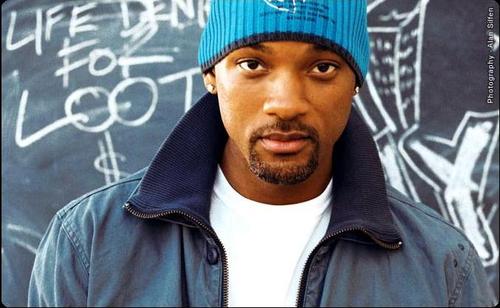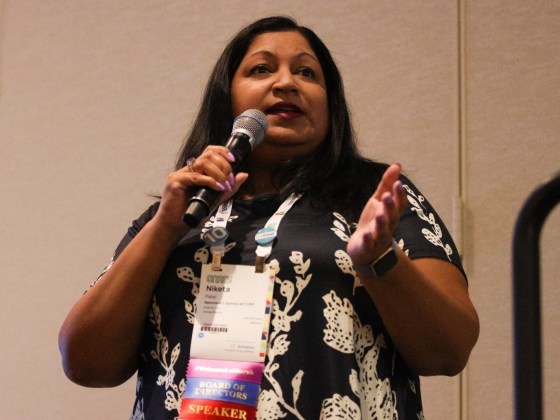Philly has a rich musical history of pioneering the genre and culture of hip-hop.
The nation is celebrating 50 years of hip-hop this month.
The history of hip-hop extends back to the Bronx, New York, on the evening of August 11, 1973. Many people consider Philadelphia to be New York’s “little sister,” but there’s nothing small about their contribution to the culture.
Philadelphia has been trailblazing in hip-hop culture for decades. In 1979, the genre first began its momentous takeover when the genre’s foundations were laid as Lady B from west Philly dropped her single “To The Beat Y’all.” Lady B is known as an emcee, a DJ and a rapper, and she had a 43-year run in radio programming in the city that helped elevate the role and significance of hip-hop.
“New York is the soil, hip-hop is the plant and Philly is the water,” said Darien “Mighty Flip Side, ESQ” Fripps, a hip-hop historian, lyrical emcee and overall Philadelphia hip-hop connoisseur.
For decades, Philly has been producing some of hip-hop’s brightest minds: Schoolly D, The Roots, Will Smith, Black Thought, Beanie Sigel, Eve, Ice-T, Kurupt. In a more modern sense, the city is responsible for producing local legends, including Meek Mill, Lil Uzi Vert, PnB Rock, Tierra Whack and 2Rare.
“The only thing I ever wanted to do was be an emcee and, more specifically, I wanted to do a music video,” Fripps said.”
Fripps, who also teaches at West Philadelphia High School, has been enthralled by the city’s underground hip-hop scene since his childhood, when he first began rapping. After being frustrated over how to create the perfect video, Fripps learned how to edit and create, gained multiple accolades and degrees and went on to work for companies and organizations, including Penn Medicine and the Philadelphia School District.
“I feel like hip-hop music and its culture really has the potential to change the world,” he said.
Hip Hop saved my life, I want to help save someone else
Fripps got really involved in Philly’s hip-hop scene at a young age. When he was 16 he got signed to Ruffhouse Records. He has been contributing to Philadelphia’s hip-hop culture for his entire life. He runs a lot of promotional events, activations, hip-hop series, parties and he DJs.
He is also a teacher in media production. As a career and technical education teacher, he prides himself in educating his students on all types of career possibilities, including those in the creative arts fields.
“The culture that saved my life, I want it to help save someone else,” Fripps said.
When it comes to Philly’s hip-hop culture, Fripps is confident that the beauty of the culture can move forward in a way where it is not overshadowed by underlying themes of violence that stem from jealousy, rivalries, tensions and a lack of resources to go around.
“There cannot be a shadow without some light on the other side,” is the teacher’s philosophy.
On the current state of hip-hop in Philly, Fripps believes a turning point is on the edge, and artist 2Rare is one of the current trail blazers.
The recent 50 year anniversary of hip-hop was celebrated widely in Philly.
One of the celebrations of hip-hop in Philadelphia was Hip-Hop In The Park on August 12 at Eakins Oval, hosted by Black Soul Summer. This free event included “all four elements of hip-hop: Graffiti, Breakin, MC, DJs” and the organization continues to sponsor gatherings throughout the year to bring the community together.
“People really don’t appreciate Philly enough in my opinion,” said Earl Hopkins, an arts and culture reporter at the Philadelphia Inquirer.
“I think it’s amazing because of how varied some of the talents are and how deep it is,” said Hopkins on the Philly hip-hop culture. “I’m still learning about new sounds, new talent, even from South Jersey.”
“I think it [the city] is one of the most influential and best out there.”
Hip Hop at 50
In celebration of the 50th anniversary of hip-hop, Hopkins has recently been interviewing local Philadelphia musicians and DJs.
“We interviewed 10 Philly DJs,” he said. “We talked about what songs, to you, represent Philly.”
Some of the favorite answers included “Just Wanna Rock” by Lil Uzi Vert and “Dreams & Nightmares” by Meek Mill.
Along with the music, some aspects of Philly’s hip-hop culture include art such as graffiti wall art, along with a heavy emphasis on different forms of dancing including break dance.
Kojin Tashiro is a music producer and a composer for LWC Studios, where he composes soundtracks and audio for podcasts the company creates.
“I think that a lot of people need to actually be educated on the flow of music,” Tashiro said. “More people need to study and understand the flow of how music came from one city to another. And Philadelphia was in the center of all of it.”
“[Philly] needs its flowers as much as any other city that had its origins in hip-hop history and culture.”
Philadelphia is a city that naturally has a large sense of community, and Fripps believes the culture is for everybody.
“Hip-hop music and its culture is open to everyone. Even Kool Herc said this. Hip-hop is the only thing that has ever realized Martin Luther King’s dream.”
Uniquely Philly
A trend uniquely individual to Philadelphia, the city’s hip-hop scene has been within the hearts of many ever since their childhoods.
Rahaman “Kil” Kilpatrick grew up in uptown before attending Morgan State University. He runs his own hip-hop podcast, “Apartment 5B,” and has been loving the culture since 1984.
During his time at MSU, he helped coordinate and host hip-hop shows and that passion has been following him ever since.
When it comes to the 50-year celebration, Kilpatrick believes in a more year-round approach to loving hip-hop.
“I’m going to keep doing what I’ve been doing the last 39 years,” Kil said. “Don’t be the husband who only brings his wife flowers on Valentine’s Day, bring her flowers every day.”
Kilpatrick’s aim is to love hip-hop all year long and he does his podcast every week.
Philadelphia is known for its architecture, and for the vibrant graffiti art that graces its walls. A lot of this goes back to the initial hip-hop movement, and artists including Darryl “Cornbread” McCray, a pioneer in the graffiti art movement.
When it comes to non-musical elements of hip-hop, Kilpatrick cites Philly as a pioneer within multiple aspects, but particularly graffiti art: “Cornbread was really the first graffiti artist to put hip-hop [artists] on the walls.”
Although New York City and Los Angeles are notorious for their contributions to the culture, Philly definitely doesn’t fall far behind.
“We definitely deserve a seat at the table when it comes to hip-hop,” Kilpatrick said.
To Fripps, there are only two questions that require one to be a part of the hip-hop scene: “Are you dope, and are you down?”
“These are the only things that hip-hop cares about.”






